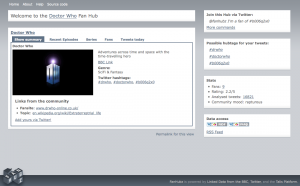Due to holidays etc I’ve been a bit late in reporting back on the Design Bash we held in conjunction with the 2010 European LAMS conference last month at the University of Oxford.
This is the third design bash I’ve been involved in organising, and they’re probably closest in style and structure to an un-conference. There is no pre-set agenda and the main aim of the day is to foster meaningful extended dialogue between delegates. In other words, just allowing people to speak to each other. This year, the groups divided along a number of lines. One group spent most of the day discussing the ” critical success factors for curriculum design”. Paul Bartholomew from the T-SPARC project at BCU, helpfully created a mindmap of the discussion.
In contrast to these more cerebral discussions, there were a number of mini-demonstrations of tools and systems including the GLO tool, ldshake, and compendium LD, and wookie. Again links to all the tools are in the available online from the Design Bash Cloudworks site.
James Dalziel demoed a number of new features of the LAMS system such as embedding which many of the delegates were interested in. At last year’s design bash, embedding and previewing of designs was a key theme of many of the discussions, so it was great to see how over the year the discussion has developed into an actual implementation.
Members of the LDSE project team attended and the day provided a great opportunity for the team to discuss and develop potential integrations from others. For example, Bill Olivier and Diana Laurillard had a very fruitful discussion about LDSE using the IDIBL framework that the University of Bolton have developed.
Unlike last year’s event there wasn’t very much activity around sharing of designs, and I’m not sure if that was due to the size of this year’s event – there were quite a few more people in attendance. Or, if it was simply down the the overriding interests of participants this year. If we run the event again next year, we may have a slightly more structured agenda and dedicated demo slots and a slightly more structured technical stream. We did also discuss the possibility of running a similar event online. This is something we may well investigate further, and certainly it has possibilities. The cloudworks site itself does allow for a level of interactivity, however I did notice that there wasn’t as much external contribution this year compared with last. However, again this just maybe down to fact that we had more people there in person.
Overall though, there was very positive feedback from delegates on the day. You can view (comment and contribute too) all the resources from the day from Cloudworks.
